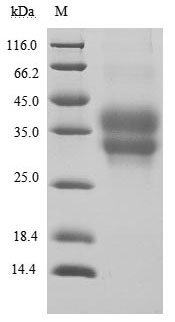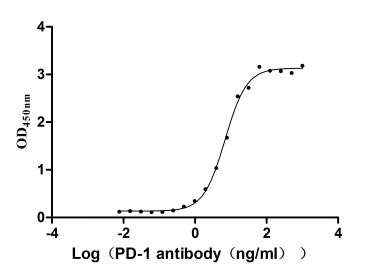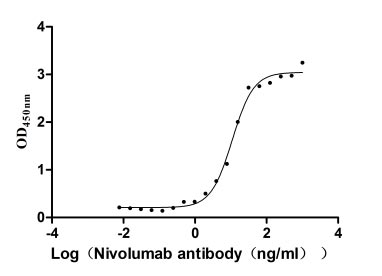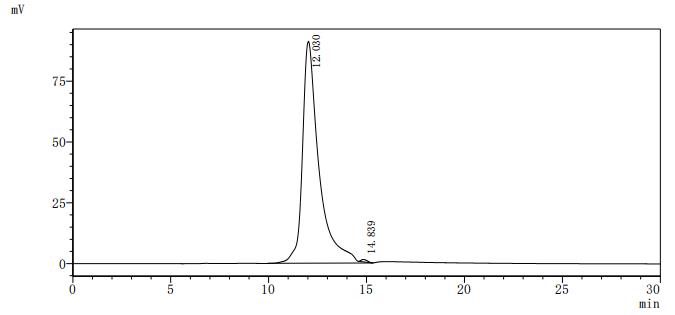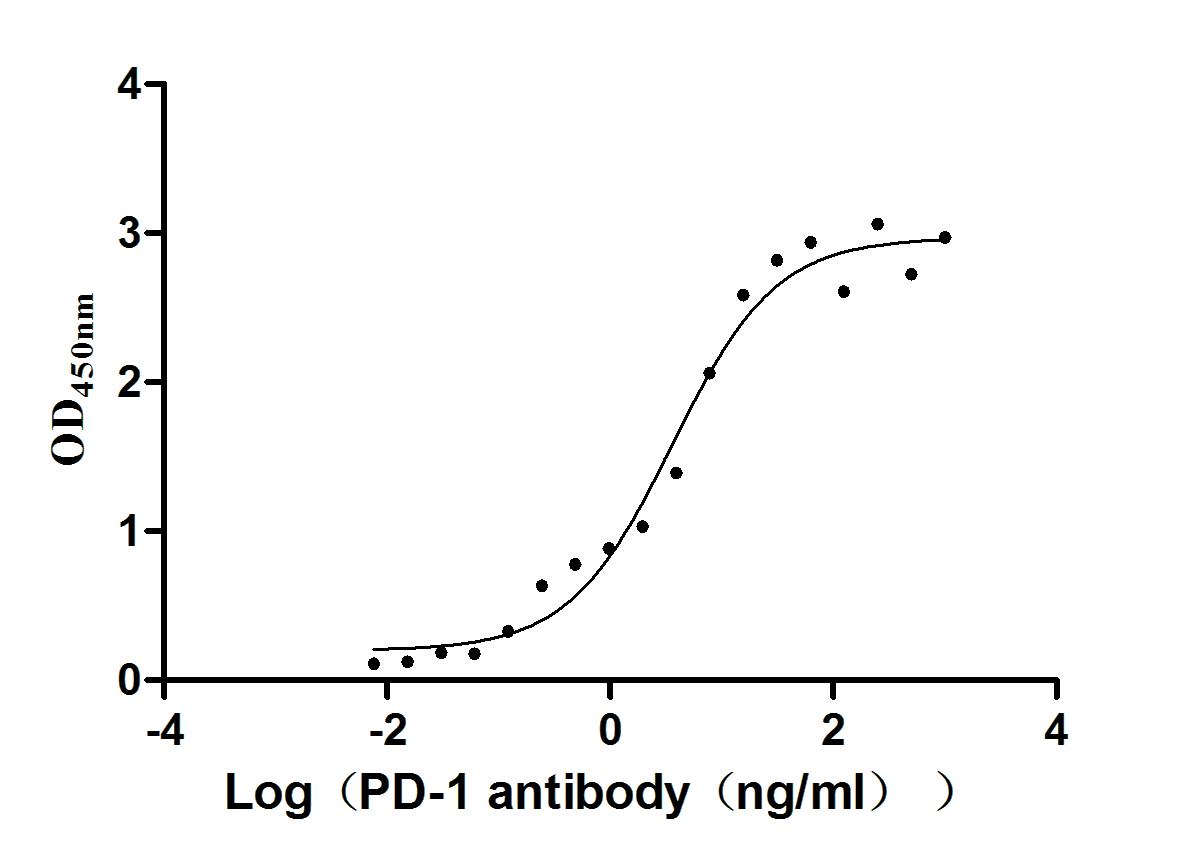CUSABIO used a DNA fragment (encoding amino acid 25-167 of the human PDCD1) with a C-terminal 6xHis-tag to generate the recombinant human PDCD1 protein in mammalian cells. This PDCD1 protein was subjected to SDS-PAGE under reducing conditions and presented a molecular mass band of about 30 kDa on the gel. Its purity is greater than 95%. The endotoxin content is less than 1.0 EU/ug as determined by the LAL method. It has been identified as an active protein through its binding ability with the anti-PDCD1 antibody or Nivolumab in the functional ELISA. Immobilized PD-1 at 2 μg/ml can bind Anti-PD-1 recombinant antibody with the EC50 of 6.087-7.854 ng/ml. Immobilized PD-1 at 2 μg/ml can bind Nivolumab with the EC50 of 9.713-12.39 ng/ml. And it is in stock now.
PDCD1, also called PD1 or CD279, is an immunoinhibitory receptor expressed by all T cells during activation. It plays a critical role in balancing protective immunity and immunopathology, homeostasis, and tolerance. PD-1/PD-L1 pathway is responsible for cancer immune evasion and has become the target for cancer treatment.


